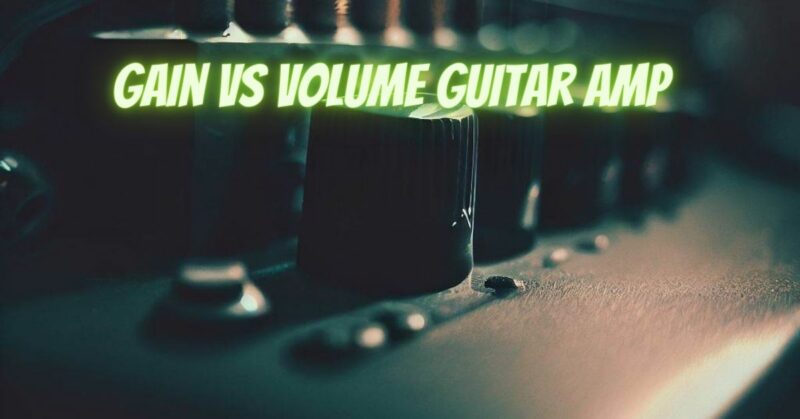In the world of guitar amplification, terms like “gain” and “volume” hold significant importance, yet they represent distinct aspects of your amplifier’s sonic character. Understanding the differences between gain and volume is essential for shaping your desired guitar tone and achieving the right balance between distortion and loudness. In this article, we unravel the intricacies of gain and volume in guitar amplifiers to help you navigate the sonic spectrum effectively.
Gain: Sculpting Your Tone’s Character
Definition: Gain refers to the level of amplification applied to your guitar’s signal before it enters the amplifier’s preamp stage. It primarily influences the amount of distortion or overdrive in your tone.
Characteristics:
- Distortion: Higher gain settings introduce distortion to your tone, creating harmonically rich and saturated sounds. This is especially prominent in genres like hard rock and metal.
- Tonal Character: Gain settings shape the tonal character of your sound. Lower gain produces cleaner tones, while higher gain settings result in warmer, thicker, and more aggressive tones.
- Sustain: Increased gain often leads to greater sustain, allowing notes and chords to ring out for longer durations.
- Articulation: As you increase gain, you may notice a reduction in note definition and articulation. This is more pronounced at extreme gain levels.
Volume: Controlling the Sound’s Intensity
Definition: Volume, also known as “master volume” or “output volume,” controls the overall loudness of your amplifier’s output.
Characteristics:
- Loudness: Adjusting the volume knob directly affects the output level of your amplifier, determining how loudly the sound is projected.
- Clean vs. Distorted Volume: Volume controls the overall output, regardless of the gain setting. You can have a clean sound at a high volume by using low gain and a high master volume or achieve a distorted tone at a low volume with high gain and a lower master volume.
- Dynamic Response: Volume affects the dynamic response of your amp, allowing you to control the intensity of your playing.
Balancing Gain and Volume:
Finding the right balance between gain and volume is essential for crafting your desired guitar tone:
- Experimentation: Start with the gain setting that suits your musical genre or playing style. Then adjust the volume to achieve the desired loudness while maintaining the desired level of distortion.
- Tonal Palette: Using lower gain settings and adjusting the volume can lead to clean tones that have a touch of natural tube compression. Alternatively, higher gain settings can produce more aggressive tones without increasing volume.
- Dynamic Control: Lower gain settings and higher volume levels are suitable for clean passages with dynamic shifts, while higher gain and lower volume can be used for powerful solos without overpowering the mix.
Gain and volume are two distinct parameters that influence your guitar amplifier’s tone and overall sound. Gain affects the amount of distortion and tonal character, while volume controls the loudness and dynamic response. Achieving the right balance between gain and volume requires experimentation and an understanding of how each parameter interacts with your amplifier and playing style. By mastering this interplay, you can harness the full potential of your amplifier to craft a versatile and expressive guitar tone that suits your musical vision.


